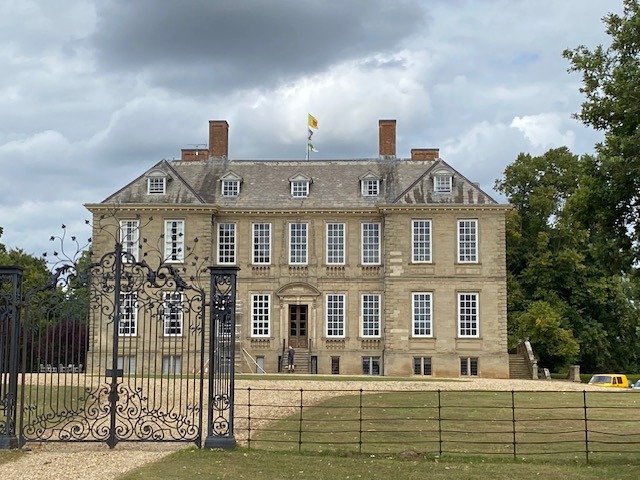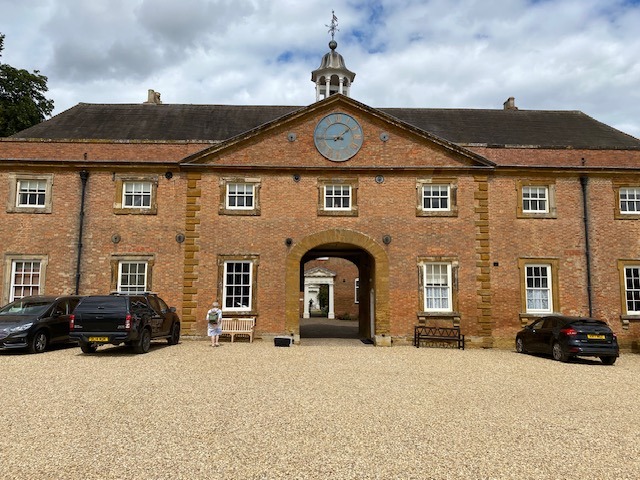
Coventry Society committee member Peter Walters reports on a sun-kissed society visit to one of the Midlands’ lesser known country houses.
Had the fates been a little kinder to Percy Pilcher, then his name would truly resonate in the aviation hall of fame.
The first person in the United Kingdom to fly, by the autumn of 1899 the Royal Navy Lieutenant was on the verge of achieving powered flight, a full four years before the Wright brothers struggled into the sky in America. On the afternoon of 30 September, at Stanford Hall in Leicestershire, the home of a close friend, he lifted off the ground in his unpowered glider The Hawk, to demonstrate his flying skills before an audience of supporters and potential investors. Tragically, The Hawk suffered a major malfunction, fell to earth from a height of about thirty feet and Percy died of his injuries two days later.
The obelisk that is his memorial stands in the fields at the spot where he crashed, on the other side of the River Avon from Stanford Hall. And his exploits are commemorated in a small museum in the hall’s stable block, featuring a replica of his ill-fated glider, made by apprentices at Armstrong Whitworth in Baginton in the 1950s.
Percy Pilcher is a poignant footnote in the story of Stanford Hall, which has been in the ownership of the Cave family, and their relatives, for almost 600 years. Designed by the noted Warwick architect William Smith and completed in 1697, the house was commissioned by Sir Roger Cave, who was MP for Coventry in the 1680s.
As a dyed-in-the-wool Royalist that must have been a slightly tricky post for Sir Roger, in a city still dominated by Dissenters and reeling from the punishment inflicted on it by Charles II. Yet the rewards of his family’s steadfast loyalty to the Crown are evident in the sumptuous furnishings of their new family home, close to the point where the counties of Leicestershire, Warwickshire and Northamptonshire meet.
From the start of the Stanford Hall guided tour, laid on for the 21-strong Coventry Society party, it’s clear that apart from an astonishing Italianate ceiling in the ballroom, its chief treasure is the Stuart collection of portraits, featuring several generations of the royal dynasty..
The collection was acquired by the Cave family in the eighteenth century and includes the final portrait ever painted of Bonnie Prince Charlie. The romantic Young Pretender looks rather more care-worn at the age of fifty, it must be said, and his is far from the most important image in the collection. To the casual viewer, it appears that there’s a portrait of an unsmiling King Charles I in just about every room.
That said, this is still a family home and its handsome rooms, lit by generous windows looking out onto the sweltering park, trace the story of the Cave family right through to the current occupants.
The hall and gardens are open to the public on selected dates during the year. Please check the website for details.

Photos: Trevor Cornfoot
